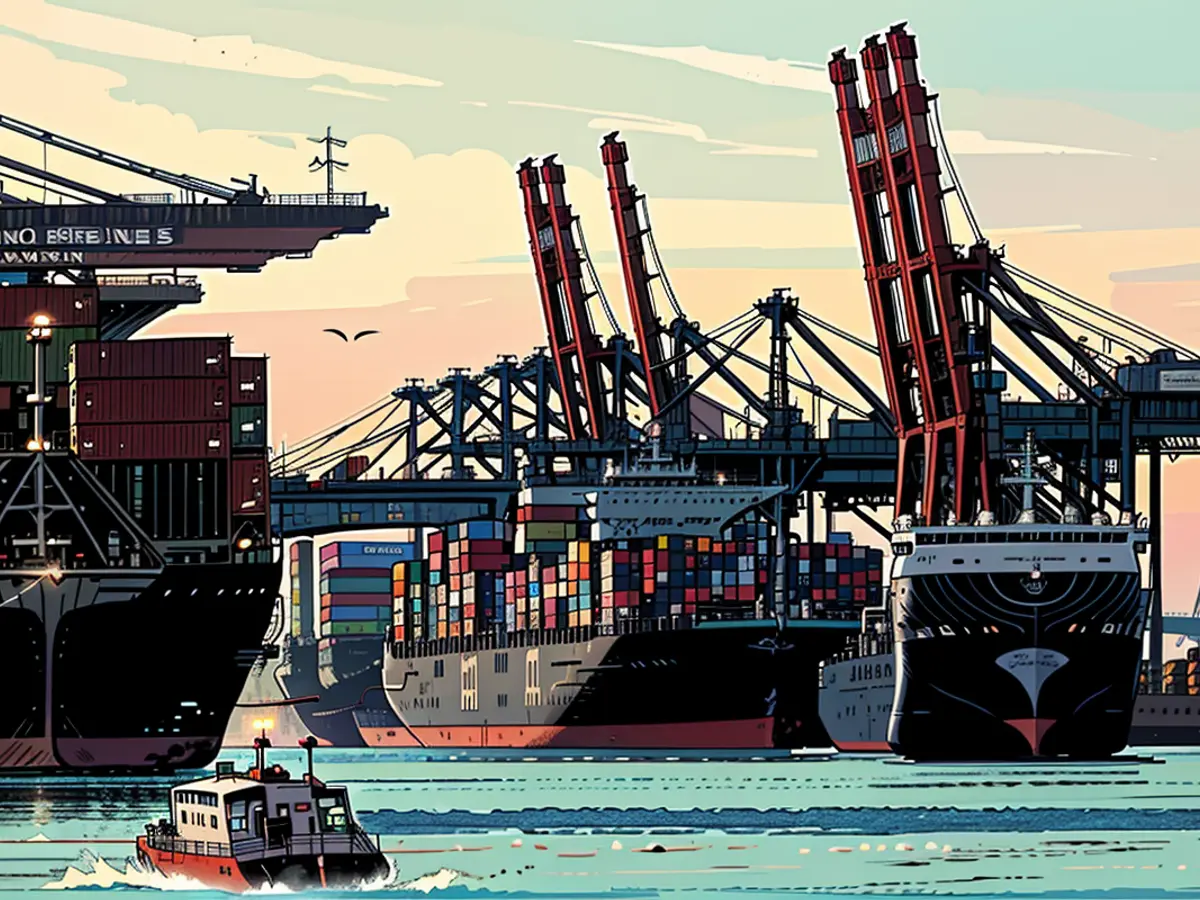- Port activity involving containers in Hamburg experiences a standstill.
Due to the tricky circumstances in the Red Sea and Germany's moderate financial performance, the Port of Hamburg's container traffic has remained somewhat subdued. In the first part of the year, a sum of 3.8 million standard containers (TEU) were processed, as reported by Hafen Hamburg Marketing. This represented a decrease of 0.3% compared to the previous year. Out of these, 3.4 million TEU were loaded - a slight increase of 0.5% compared to the previous year. In the course of the entire year 2023, a total of 7.7 million TEU were unloaded and loaded in the Port of Hamburg. This was the smallest number since 2009.
The Port of Hamburg holds a significant position as Germany's primary port, and ranks third, after Rotterdam and Antwerp, as the most crucial transshipment hub in the North Range. This term refers to the significant North Sea ports in continental Europe. Approximately 80% of European trade is channeled via the North Range.
76.9 million metric tons of freight
In the initial six months, a total of 76.9 million metric tons of ocean freight were managed at the Port of Hamburg's universally applicable port, a drop of 3.9% compared to the previous year, as per the port's marketing division. Specifically, bulk cargo decreased, decreasing by 12.1% to 16.7 million metric tons. The handling of general cargo remained steady at 39.2 million metric tons.
Hafen Hamburg Marketing ascribes the decrease in bulk cargo to the ongoing energy transition, which involves the switch from fossil energy carriers to alternative energy sources. "This significantly impacts coal handling, which decreased by 11.8% over the past six months," said Axel Mattern, Managing Director of Hafen Hamburg Marketing.
China continues to be the most significant trading partner by a large margin
China remains the most significant trading partner, with a total of 1.1 million TEU processed in the first half of the year - a decline of 2.2% compared to the previous year. The United States followed closely in second place, with an increase of 9% in its processing to 341,000 TEU. Particularly noteworthy was the container handling with Malaysia and Turkey, which increased by 14.7% and 26.7% respectively. Malaysia now holds the tenth position, while Turkey has moved up six places to the twelfth position.
The number of container ship calls at the Port of Hamburg increased by nearly 1% according to the report. This primarily occurred due to medium and smaller-sized ships, while the number of calls by large container ships with more than 10,000 TEU decreased. This is due to the attacks by Houthi rebels in the Red Sea, which have led shipping companies to divert around the Cape of Good Hope instead of using the Suez Canal for several months now, thereby extending the ships' journeys to and from Asia by up to 15 days.
Rail boosts container transportation to 1.3 million TEU
The hinterland traffic by rail has shown promising progress. Despite track closures and numerous construction sites, the rail share in transport increased to 50.8% in the first six months, with a total of 1.3 million TEU transported - an increase of 3.1% compared to the previous year. In terms of weight, the transported volume increased by 1.2% to 23.4 million tons.
The Port of Hamburg, being a key transshipment hub in the North Range, plays a significant role in the transportation and telecommunications of European trade, as approximately 80% of it is channeled via this region. Due to the ongoing energy transition, bulk cargo handling at the Port of Hamburg, a major component of transport and telecommunications, has decreased by 12.1% compared to the previous year.








